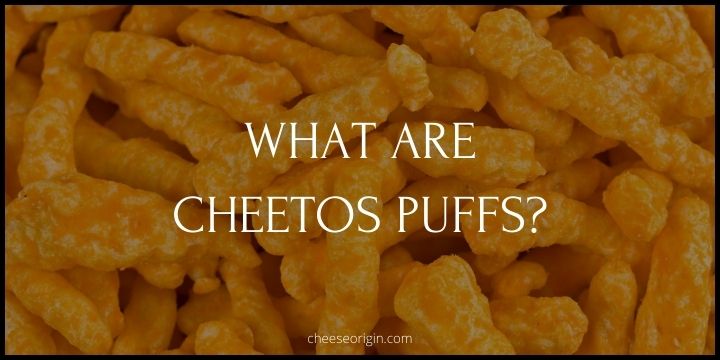What is Babybel? A Snack-Sized Cheese Journey
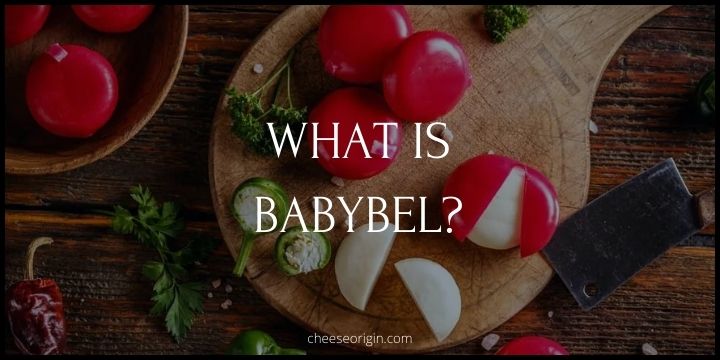
Welcome to a delightful exploration of one of the world’s most beloved bite-sized treats – Babybel. This petite, wax-coated wonder has been a staple in lunchboxes and picnic hampers for decades, its striking red shell concealing a soft, creamy cheese that’s as addictive as it is nutritious.
But what do we really know about this miniature marvel? How did it come to be, and how did it capture the hearts (and taste buds) of millions around the globe? Join us on this snack-sized journey as we unravel the story behind Babybel – the little cheese with a big personality. From its origins in the French countryside to its current status as an international snack sensation, we’ll dive into everything you’ve ever wanted to know about this delectable dairy delight. So, whether you’re a long-time fan or a curious newcomer, sit back, grab a Babybel, and let’s embark on this cheesy adventure together!
Quick Facts About Babybel
| Fact | Details |
|---|---|
| Origin | Originated in France in 1952 |
| Type of Cheese | The original Babybel is a semi-hard cheese made from cow’s milk, similar to Dutch Edam |
| Famous For | Known for its distinctive red wax coating, which helps preserve the cheese and keep it fresh |
| Varieties | Comes in various flavors including original, light, cheddar, gouda, and more |
| Calories | The original mini Babybel contains 70 calories |
| Protein Content | Each piece provides 5 grams of protein |
| Availability | Available in over 76 countries worldwide |
| Manufacturer | Produced by Bel Group, a global leader in branded cheese |
| Packaging | Each cheese is individually packaged in net bags |
| Size | Small, snack-sized cheeses that are perfect for on-the-go |
What is Babybel?
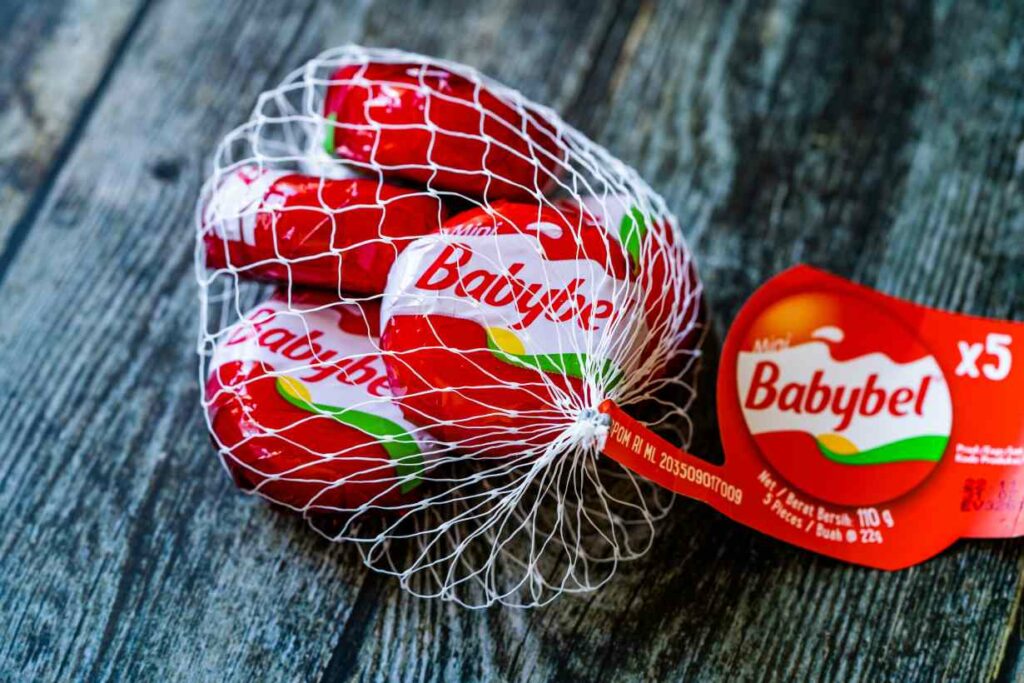
Babybel, a charming cheese that has made a big name for itself in the snack world, is as unique as it is tasty. This miniature marvel, wrapped in its iconic red wax shell, originated in France in 1952 and has been captivating taste buds worldwide ever since. But what sets Babybel apart from other cheeses isn’t just its size or its distinctive packaging. Its uniqueness lies in its versatility and the joy it brings to cheese lovers of all ages.
The red wax that encases each Babybel isn’t merely aesthetic; it serves a crucial role in preserving the freshness and flavor of the cheese within. It’s this wax coating that ensures each Babybel remains creamy and delicious from the moment it leaves the factory until it’s unwrapped and savored by the consumer. The wax shell also makes Babybel a highly portable snack, perfect for picnics, packed lunches, or a quick bite on the go.
At first glance, Babybel may seem simple, but its flavor profile is anything but. This semi-hard cheese, made from cow’s milk, boasts a subtly sweet flavor reminiscent of Dutch Edam. Despite its compact size, each Babybel delivers a full-bodied taste experience that belies its diminutive stature.
Beyond its original flavor, Babybel is also available in several exciting variants, including light, cheddar, gouda, and more. Each variety offers a unique flavor twist, making Babybel not just a snack, but an adventure in taste exploration.
Babybel’s journey from a small French dairy to the lunchboxes and snack plates of over 76 countries worldwide is an inspiring tale of culinary success. Manufactured by Bel Group, a global leader in branded cheeses, Babybel embodies the company’s commitment to quality and innovation. In the end, Babybel isn’t just a cheese; it’s a celebration of flavor, portability, and the joy of snacking.
Babybel Tasting Notes
- Texture: Smooth and creamy, Babybel offers a pleasant mouthfeel that is both satisfying and indulgent.
- Flavor: The original Babybel has a distinct, subtly sweet flavor with a hint of nuttiness, akin to Dutch Edam cheese.
- Aftertaste: Babybel leaves a mild, lingering aftertaste that encourages you to reach for another bite.
- Aroma: This small cheese emits a gentle, appetizing aroma that is inviting and not overpowering.
- Pairings: Babybel pairs beautifully with fruits like apples and grapes, crackers, or even a glass of light, crisp white wine.
- Variety Flavors: The different varieties of Babybel, such as the light, cheddar, and gouda, each offer a unique flavor profile, adding an exciting twist to the tasting experience.
- Wax Coating: The iconic red wax coating not only adds to the visual appeal but also enhances the freshness and taste of the cheese within.
- Snackability: Thanks to its compact size and individual packaging, Babybel is the perfect on-the-go snack, offering a burst of flavor whenever you need it.
- Versatility: Whether enjoyed on its own, incorporated into recipes, or served as part of a cheese platter, Babybel’s versatility enhances its overall tasting experience.
- Global Appeal: Loved in over 76 countries worldwide, the taste of Babybel transcends borders, making it a truly global snack.
What is Babybel Made of?
| Ingredient | Description |
|---|---|
| Pasteurised Cow’s Milk | The primary ingredient in Babybel, this milk is heat-treated to kill bacteria, ensuring the cheese is safe to eat. |
| Rennet | This is a complex set of enzymes used in cheesemaking to curdle the milk, separating it into solids (curds) and liquid (whey). |
| Lactic Ferments | These are beneficial bacteria that convert lactose into lactic acid during fermentation, helping to develop the cheese’s flavor and texture. |
| Salt | Enhances the flavor of the cheese and acts as a natural preservative. |
| Coconut Oil (for Plant-Based Babybel) | Used in the production of the dairy-free Babybel alternative, coconut oil helps achieve a smooth and creamy texture. |
| Paraffin Wax | This forms the outer layer of Babybel, protecting the cheese from air and moisture. It’s part of the blend used for the red wax coating. |
| Microcrystalline Wax | Another component of the protective wax coating, microcrystalline wax adds rigidity and strength to the wax shell. |
| Coloring | Used in the wax coating to give Babybel its distinctive red color. |
Why is Babybel so Popular?
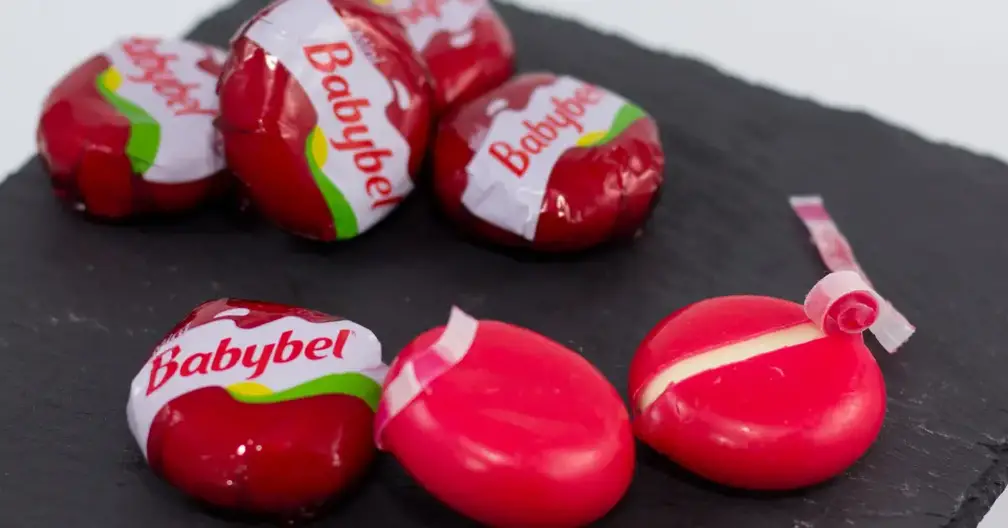
Babybel’s popularity can be attributed to a variety of factors, each contributing to its global appeal. One of the key reasons lies in its distinctive packaging. Encased in a vibrant red wax shell, each Babybel is not only visually appealing but also perfectly preserved, maintaining the freshness and flavor of the cheese within. This unique packaging makes Babybel highly portable, fitting effortlessly into lunch boxes, picnic baskets, or even a pocket, making it an ideal snack for on-the-go individuals.
Another factor contributing to Babybel’s popularity is its mild yet pleasing flavor. The cheese, reminiscent of Dutch Edam, has a subtly sweet taste that appeals to a wide range of palates. Its mildness makes it particularly popular among children, while its portion-controlled size is appreciated by adults mindful of their intake.
Moreover, Babybel is a source of protein and calcium, essential nutrients for children’s growth and adults’ health. This healthy aspect, combined with its delicious taste, makes Babybel a favorite among those looking for a nutritious and satisfying snack.
Babybel’s commitment to sustainability also plays a part in its popularity. The brand is known for its responsible practices, including its work with local farms and efforts towards sustainable packaging. This resonates with consumers who value ethical and environmentally friendly products.
Lastly, Babybel’s versatility adds to its appeal. Available in a variety of flavors, from the original to cheddar, gouda, and more, there’s a Babybel to suit every taste. Whether enjoyed as a standalone snack, incorporated into recipes, or included in a cheese platter, Babybel’s adaptability makes it a hit across different culinary contexts.
In summary, Babybel’s popularity is a result of its unique combination of portability, taste, nutrition, sustainability, and versatility. It’s more than just a cheese; it’s a snack that meets the diverse needs and preferences of consumers worldwide.
Is Babybel a Healthy Cheese
Babybel is often considered a healthy cheese option, particularly when consumed in moderation as part of a balanced diet. One of the key reasons for this is its nutritional composition. Babybel provides a good amount of protein, vitamin B12, calcium, and phosphorus, nutrients that are essential for maintaining overall health.
The majority of the fat in Babybel Cheese is in the form of healthy monounsaturated and polyunsaturated fats, which have been linked to a reduced risk of heart disease. This is particularly true for the light variety of Babybel, which contains only 50 calories per serving but still offers 6g of protein.
Furthermore, Babybel does not contain any added sugars, which contributes to its status as a healthier cheese option. It also has a moderate fat content, providing a balance between flavor and nutritional value.
However, it’s worth noting that while Babybel can be part of a healthy diet, it’s not necessarily superior to other cheeses in terms of nutrition. The key to enjoying Babybel, like any other food, lies in portion control and balance.
In terms of specific varieties, the original Babybel provides 4g of protein and 140mg of calcium per serving. These nutrients are vital for muscle growth and bone health respectively.
10 Best Babybel Substitutes
| Substitute | Type of Cheese | Reason for Substitution |
|---|---|---|
| Cheddar | Hard Cheese | Cheddar is widely available and has a similar firm texture to Babybel. It also offers a slightly stronger flavor. |
| Gouda | Semi-Hard Cheese | Like Babybel, Gouda has a mild, creamy flavor and smooth texture. It’s also rich in protein and calcium. |
| Mozzarella | Soft Cheese | Mozzarella is soft, creamy, and mild in flavor, making it a good substitute for Babybel in dishes where you want a less pronounced cheese flavor. |
| Edam | Semi-Hard Cheese | Edam is a Dutch cheese that shares a similar taste profile and texture with Babybel, making it a close substitute. |
| Brie | Soft Cheese | Brie has a creamy texture and mild flavor like Babybel. It can be used as a substitute in recipes or enjoyed on its own. |
| Monterey Jack | Semi-Hard Cheese | Monterey Jack cheese is mild in flavor and melts well, making it a good substitute for Babybel in cooking. |
| Colby | Semi-Hard Cheese | Colby is an American cheese that’s similar in texture to Babybel and has a mild, creamy flavor. |
| Havarti | Semi-Soft Cheese | Havarti has a buttery, slightly sweet flavor and a smooth, creamy texture that makes it a good substitute for Babybel. |
| Emmental | Hard Cheese | Emmental is a Swiss cheese with a slightly sweet, nutty flavor. It’s a good Babybel substitute for those who prefer a stronger-flavored cheese. |
| Provolone | Semi-Hard Cheese | Provolone has a similar texture to Babybel and a mild, slightly tangy flavor. It’s a versatile cheese that can be used in a variety of dishes. |
What Pairs Well With Babybel?
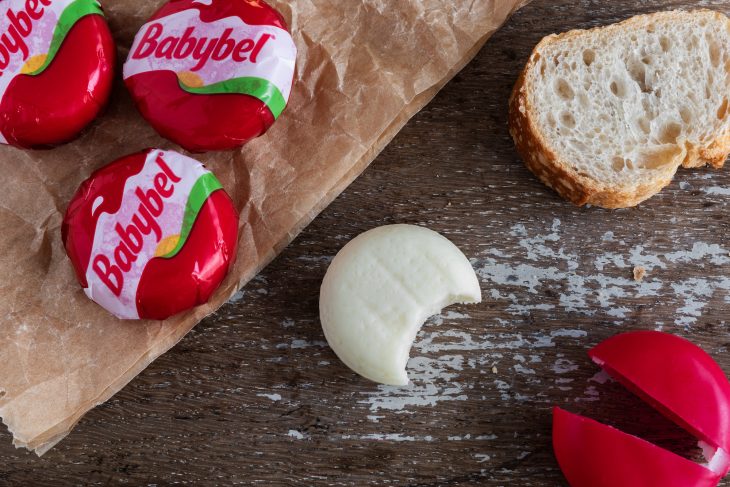
Food that goes well with Babybel:
| Category | Food |
|---|---|
| Fruits | Apples, Grapes, Pears, Dried Figs, Berries |
| Vegetables | Carrot Sticks, Celery, Cherry Tomatoes, Cucumber Slices, Bell Pepper Strips |
| Breads and Crackers | Whole Wheat Crackers, Baguette Slices, Pretzels, Rice Cakes, Multigrain Bread |
| Meats | Salami, Pepperoni, Prosciutto, Turkey Breast, Ham |
| Nuts and Seeds | Almonds, Walnuts, Pistachios, Sunflower Seeds, Pumpkin Seeds |
| Spreads | Hummus, Guacamole, Olive Tapenade, Cream Cheese, Peanut Butter |
| Other Dairy Products | Greek Yogurt, Cottage Cheese, Cream Cheese, Ricotta |
| Grains | Quinoa, Brown Rice, Whole Grain Pasta, Oatmeal |
| Seafood | Smoked Salmon, Tuna, Shrimp, Crab Meat |
| Sweet Treats | Dark Chocolate, Honey, Jams and Preserves, Granola Bars |
Also read: 11 Best Crackers that Pair Well with Cheese
Beverage that goes well with Babybel:
| Category | Beverages |
|---|---|
| Wine | Red wines such as Merlot, Cabernet Sauvignon, Pinot Noir. White wines like Chardonnay, Sauvignon Blanc, Pinot Grigio |
| Beer | Lager, Pilsner, Wheat Beer, Amber Ale, IPA |
| Non-Alcoholic | Apple Cider, Grape Juice, Cranberry Juice, Herbal Tea, Coffee |
| Spirits | Whiskey, Bourbon, Rum, Brandy |
| Cocktails | Bloody Mary, Whiskey Sour, Mojito, Margarita, Pina Colada |
Also read: Best Wine and Cheese Pairings: The Ultimate Guide
Frequently Asked Questions
1. What kind of cheese is Babybel?
Babybel is a brand of cheese that offers various flavors. The original and most recognizable version is based on Edam cheese, a soft, young cow’s milk cheese.
2. How to pronounce Babybel cheese?
Babybel cheese is pronounced as “Bay-bee-bell”. The first syllable “Bay” rhymes with “day”, the second syllable “bee” as in the insect, and the last syllable “bell” as in a ringing bell.
Also read:
- What is Humboldt Fog? A Taste of California’s Coastal Pastures
- What is Brin d’Amour? The Corsican Cheese Delight
- What is Kefalotyri? The Salty Delight from Greece and Cyprus
- What is Rogue River Blue? America’s Award-Winning Cheese
- What is Saganaki? The Greek Culinary Star
- What is Cheddar Jack? The Art of Cheese Blending
- What is String Cheese? Everything You Need to Know

